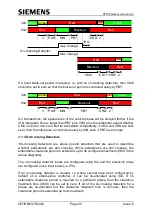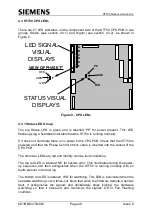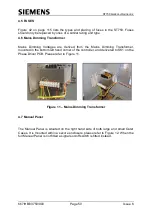
ST750
G
ENERAL
H
ANDBOOK
667/HB/33750/000
Page 35
Issue 6
MIN
Amber
PAR
PBT
3
2
CRD
CRD
Red
Green
Red
R/A
Green
Blackout
Blackout
Green
Red
Ped:
Max Change
Gap Change
On-Crossing Detector:
Veh:
IPX
2
CDY1
CMX
Red
R/A Green
Red
If a fixed black-out period is required, i.e. with no on-crossing detectors, then CMX
should be set to zero so that the black-out period is controlled solely by PBT:
MIN
Amber
PAR
PBT
3
2
CRD
Blackout
Red
Green
Red
R/A
Green
Green
Red
Ped:
Veh:
On intersections, the appearance of the vehicle phase will be delayed further if the
IGN intergreen time is larger than PBT plus CRD plus the red/amber period whether
CMX is zero or non-zero. But for backwards compatibility, if CMX and CRD are both
zero, then the intergreen is controlled solely by IGN even if PBT is set longer.
3.1.4 On-Crossing Detectors
‘On-Crossing Detectors’ are above ground detectors that are used to determine
whether pedestrians are still crossing. While pedestrians are still crossing, the
extendable clearance period is extended, up to its configured maximum (CMX in the
above diagrams).
The on-crossing detector inputs are configured using IC4 and the extension times
are configured on an input basis (i.e. IPX).
If an on-crossing detector is unused, i.e. where several have been configured by
default on a stand-alone controller, it can be de-allocated using IOA. If no
extendable clearance period is required on a particular phase, then the clearance
maximum time (CMX) can be set to zero. If all of the on-crossing detectors for a
phase are de-allocated but the clearance maximum time is non-zero, then the
clearance period is extended up to its maximum.
















































